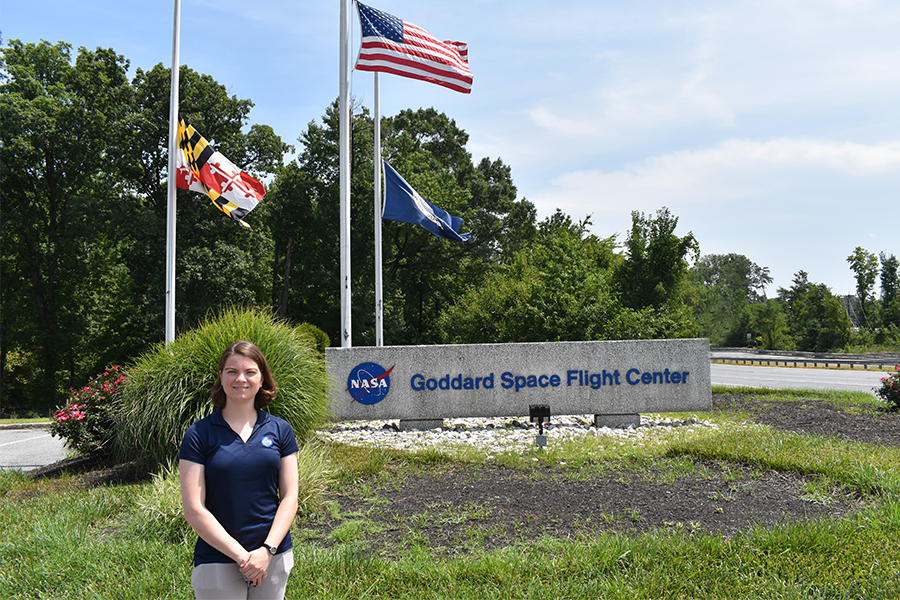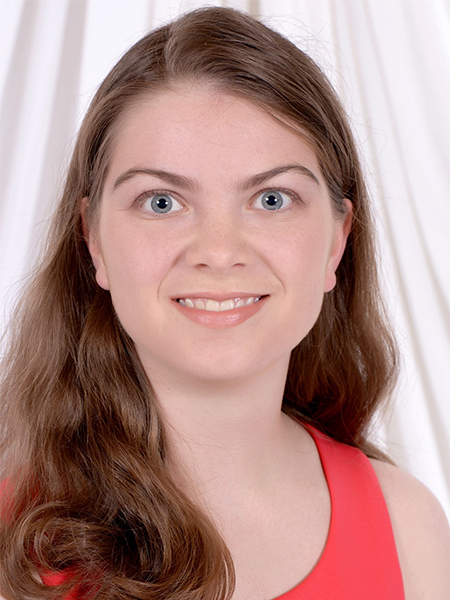The 20 Twenties: Emily Beckman

Emily Beckman couldn’t quite define it.
Her parents, Wendy and William Beckman, are pilots, so Emily had been introduced to airplanes as a kid.
When Emily was 5, she remembers her mom reading her a book about the Space Shuttle, her first real exposure to space. That changed everything, realizing the sky she’d been exploring with her parents wasn’t the actual limit.
A general interest in space continued through middle school, but Beckman still couldn’t quite figure out how to make a career of it. That didn’t come until years later when her high school, a magnet school in Tennessee, offered a class in aerospace engineering.
“I read a brochure about that, and I was like, ‘Oh! That’s what I want to do!” Beckman said.
Once she knew the field, Beckman pursued her defined passion with intent. She researched schools and knew Purdue’s reputation as a top aeronautical and aeronautical engineering school was well-deserved. But its out-of-state tuition prevented her from attending as an undergrad, so she stayed close to home and enrolled at the University of Tennessee.
While there, Beckman had three special summer experiences interning for NASA, first as part of Marshall Space Flight Center Robotics Academy then back-to-back summers at Goddard Space Flight Center. She also interned at the University of Tennessee Space Institute. At two of those stops, she heard a name repeated: Steven Collicott. Collicott was on the MS or PhD thesis committees of two of Beckman’s mentors, John Schmisseur at UT Space Institute and David Benson at Goddard.
Collicott was a professor at the School of Aeronautics and Astronautics at Purdue. His emphasis on low-gravity fluid dynamics interested Beckman when she visited Purdue, and ultimately helped her land at Purdue for graduate school.
And the work she’s doing now is being celebrated.

Beckman will be recognized as one of “Tomorrow’s Technology Leaders: The 20 Twenties” by Aviation Week Network, in collaboration with the American Institute of Aeronautics and Astronautics, this week. She’ll be joined by another AAE graduate student, Ethan Plaehn, the fourth consecutive year AAE has had at least two students honored as 20 Twenties.
She will attend the awards luncheon March 12 in Washington D.C. and finish the night as a guest at Aviation Week Network’s 63rd Annual Laureate Awards, a gala that will honor achievers and innovators in aerospace and aviation.
“I still don’t know if I’ve completely processed or understood it,” Beckman said with a laugh. “Maybe I will when I’m there and meeting all the other cool people. I’m super excited because being able to meet the other 19 people and seeing the leading-edge stuff they’re doing as well is going to be really cool.”
Beckman’s own research with slosh likely will spark interest, too.
As satellites become smaller, creative solutions are needed for how to most efficiently store propellants. One possible solution is the development of irregularly shaped propellant tanks that conform to the available room in the spacecraft. But little is known about how propellant may slosh in such tanks, so Beckman is using a combination of physical experiments and computation fluid dynamics analysis to analyze the behavior.
It was during her first internship at Goddard that Beckman first did work relating to slosh in a tank, and she “absolutely loved it.”
Beckman said slosh intrigues her for a variety of reasons. Because computational fluid dynamics takes so long to run, researchers can’t model the system at every point in its life and every fraction of propellant. Slosh is modeled as a mechanical system. Usually, engineers either use a system of pendulums or a mass-spring damper system.
“I just found it really cool you could model liquid that is very obviously not a mass attached to a spring or a mass on a pendulum,” she said. “I’ve always enjoyed math, and deriving the equations for whatever system you decided to model it as was fun.”
Better understanding the natural frequency of slosh and the behavior of fluid in certain tanks and conditions is vital to a spacecraft’s success. If sloshing happens when thrusters are turned on for a spacecraft with tight-pointing requirements, the spacecraft could lose its pointing stability. Or if an engine or pulse or maneuver of a spacecraft is operating at a frequency close to the natural frequency of slosh, the slosh is amplified.
“That’s a concern for any mission,” she said.
Beckman, who was awarded a NASA Space Technology Research Fellowship in 2018, sought out where she could continue the work from Goddard in graduate school. Collicott and Purdue turned out to be the right match.
Collicott is working on small sat propellant management technology and devices, and he suggested Beckman’s research topic when she visited Purdue before starting grad school.
“Since he was doing the research and I liked slosh, the two just fit really nicely together,” Beckman said, “sort of gives you a more complete picture by having the two together.”
